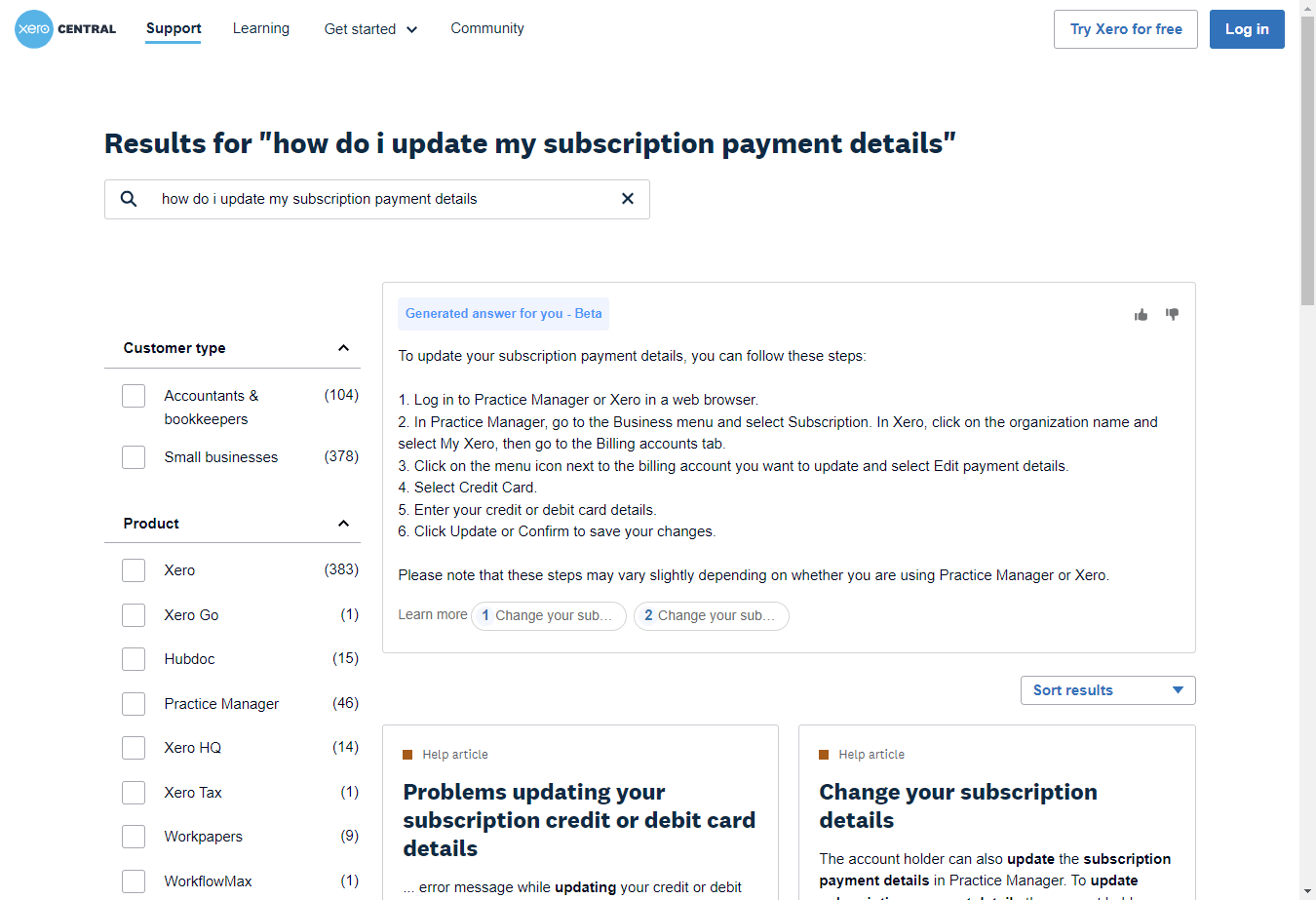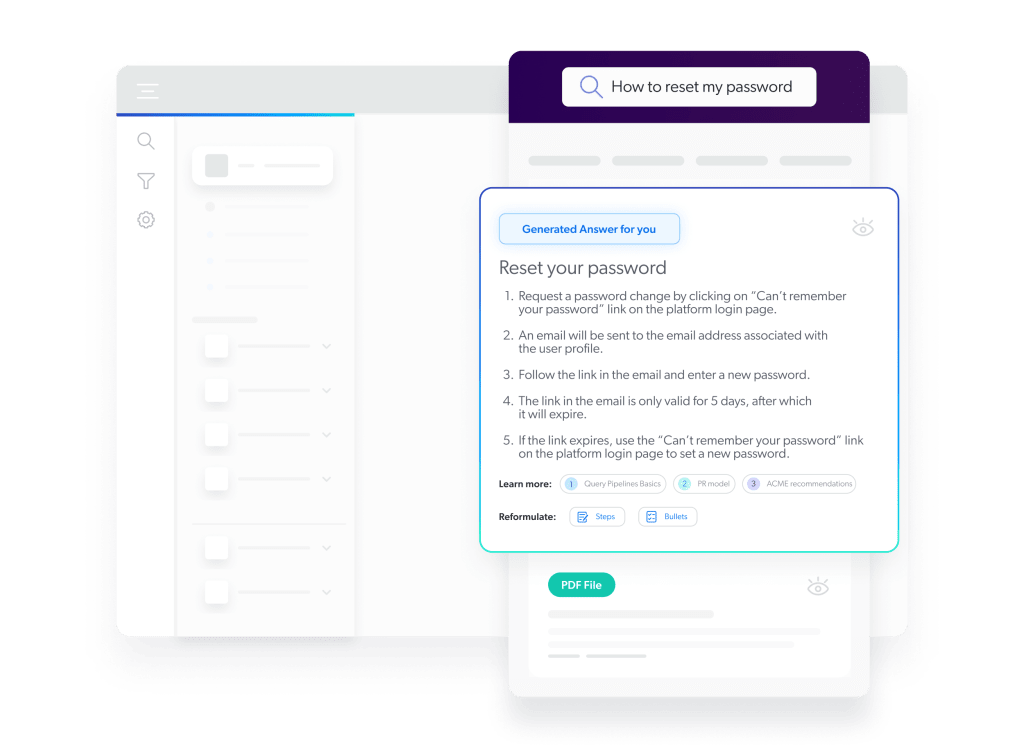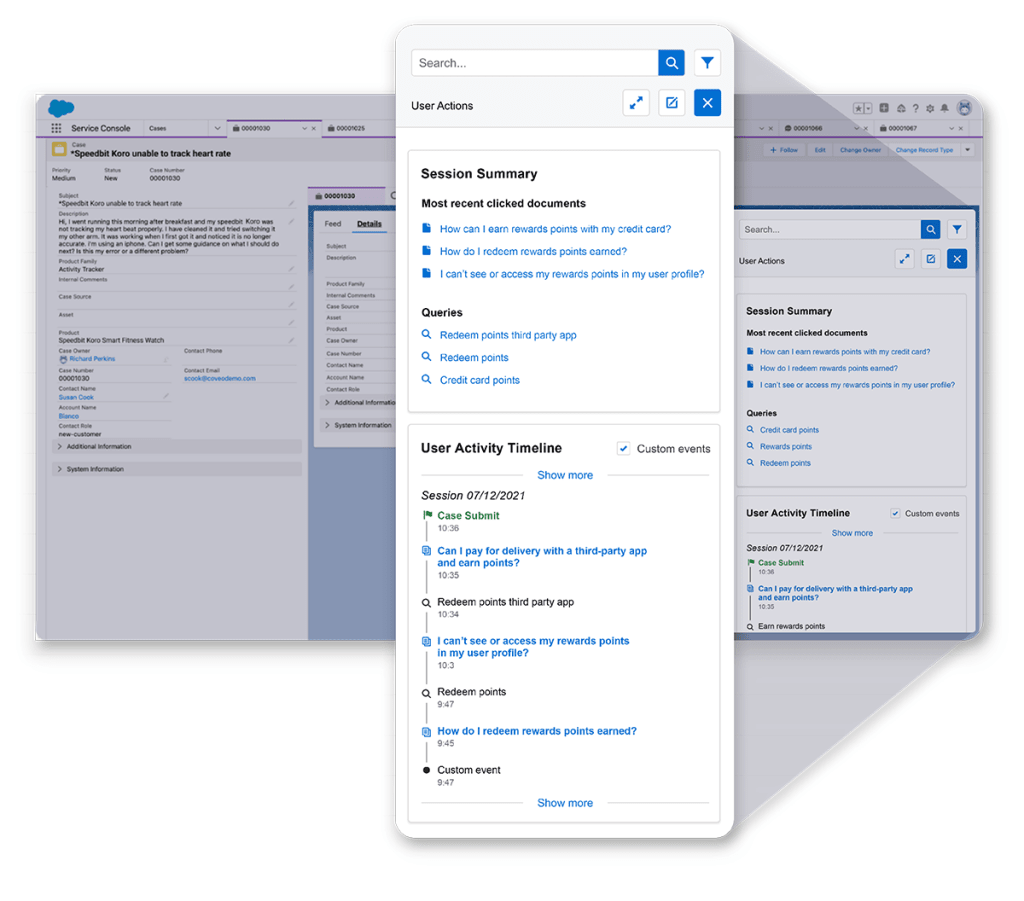This might be an uncomfortably familiar scenario: You’re on a call with your CFO, and they’re asking why customer retention is dipping while acquisition costs are climbing. You’re seeing the numbers: thousands spent to win a B2B customer, only to lose them within months. It’s not just frustrating, it’s unsustainable.
But here’s the part that stings most: when those customers leave, they don’t go quietly. They take their customer feedback with them — to peers, to LinkedIn, to review sites.
What if you could flip the script?
Imagine those same customers raving about how easy it is to get answers, how your team solves problems before they even ask, how every touchpoint feels like it was made just for them.
That’s what great B2B customer service does. It’s not about adding more customer service representatives or writing another help doc. It’s about creating digital experiences so intuitive and seamless, customers don’t just stay — they grow with you.
In this post, we’ll explore what makes B2B service different, why it’s a strategic lever (not a support cost), and the tech that’s redefining what’s possible.
What Is B2B Customer Service?
Business-to-business (B2B) customer service (sometimes also called B2B customer support) is all about helping companies get the most out of the products and services they’ve invested in. It covers everything from onboarding and troubleshooting to enabling long-term success — ensuring every touchpoint adds value.
While the core goals are similar to business-to-consumer or B2C customer service — build trust, solve problems, strengthen relationships — the dynamics are different. With a B2B client, you’re supporting teams, not an individual customer. So, delivering customer satisfaction on a B2B buyer level is a whole different ball game.
Here’s where the differences show up:
Customer Relationships
In B2B customer experience, you’re not just delivering a product — you’re stepping into a long-term partnership. With complex onboarding and multi-year contracts, customer service has to think marathon, not sprint, to create long-term customer loyalty.
Revenue Impact
A single B2B business customer might represent six or seven figures in revenue. One misstep in service? That’s not just customer churn — it’s a major hit to the business.
Customization
No two businesses are alike, and B2B service reflects that. Experiences taliored to a B2B client’s specific customer needs are the norm, not the exception — because what works for one client won’t cut it for another.
Specialization
These aren’t everyday products. From fintech to manufacturing, B2B customers often operate in niche industries with specific needs. Great support means knowing enough to speak their language — and solve their problems like an insider.
Why Business-to-Business Customer Service Is Important
Whether you’re offering a $200/month SaaS subscription or $25,000 custom service packages, the need is the same: a reliable, effective B2B customer service strategy. Get it wrong, and you risk more than just a support ticket backlog — you could see revenue slip, your reputation take a hit, and competitors start closing in.
B2B relationships are built for the long run. Business leaders want partners, not just vendors, which makes them skeptical of companies that disappear after the contract’s signed. Even the flashiest product won’t win them over if the word on the street is your service doesn’t show up.
And when your support reputation gets ahead of your sales pitch, you don’t just lose deals — you lose trust.
How to Improve Customer Service in B2B
A solid strategy for exceptional customer service means surfacing answers to questions and empowering customers to get on with their day, rater than getting stuck troubleshooting problems. That same strategy should also make B2B interactions with the service team seamless.
So, what does this look like in practice? The most effective teams use a combination of the following to reduce conflicts, mitigate future issues, and leave the customer confident in their choice to continue the business relationship.
Unify the Experience Across Every Touchpoint
Customers and employees alike expect to find information quickly, no matter where they start.
F5 Networks built a single, unified experience powered by AI-search across seven platforms — from their corporate website to their global support hub and engineering content.

By prioritizing search relevance and anticipating user needs, they’ve seen increases in self-service success, higher CSAT, and even surpassed industry-leading benchmarks for knowledge feedback.
The payoff? Customers solve problems faster, employees ramp up more quickly, and F5 strengthens its brand by delivering consistent, relevant experiences everywhere.
Build Content Pipelines That Drive Customer Growth
Best-in-class customer service doesn’t stop at deflecting cases — it creates pathways for customers to get more value from your products.
As part of their regular business practices, Informatica’s customer success teams sets clients on the right path with free micro-learning resources. Once those are completed, however, Informatica leveraves Coveo to suggest additional for-pay educational offerings. Just in the first year, they generated a $1M pipeline!

“After customers have finished the learning path, we ask if the course was useful,” said Pattabhi Raman, VP Digital Experience at Informatica. “Close to 90% of customers come back and told us yes. This results in them using the product more independently, exploring these features and capabilities.”
Personalized Customer Self-Service
Self-service isn’t just a B2C trend—it’s taking hold in B2B, too. In fact, Gartner found B2B customers are 1.4x more likely to try self-service than consumers. But here’s the problem: 83% try to solve issues themselves, and only 15% actually succeed. The rest end up switching to live support.
But that doesn’t have to be your story. With AI-powered self-service, you can bring together all your content and deliver consistent, relevant answers across every channel — reducing case volume while giving your customers the fast, effortless support they’re looking for.

From unified, intelligent search and generative answers to proactive customer service in the form of smart content recommendations, AI makes sure the right info shows up at the right time—whether customers are in your help center, chatbot, community, or portal. Pre-built connectors and auto-indexing keep things fresh, while AI constantly fine-tunes results for accuracy and impact.
And it’s not just better for users. With advanced analytics, your customer service team can track deflection, spot weak content, and close gaps before they become issues. AI-driven self-service doesn’t just lower costs — it helps you scale smarter and create experiences that keep customers coming back.
Cloud-based accounting software provider Xero is an amazing example of fantastic digital customer self-service. By incorporating generative answering into their search infrastructure, they achieved a 20% increase in self-service success in just 6 weeks!
In-Product Help
Customers don’t want to break their stride just to get help. They expect answers right where they are, inside the tools they already use. With In-Product Experience, SaaS providers can embed AI-search and smart recommendations directly into the product UI with a single line of code. That means help shows up exactly when it’s needed — no context-switching, no confusion.

When users, new or seasoned, get answers in the flow of work, friction disappears. Engagement goes up, drop-offs go down, and everyone moves faster. It’s the kind of quiet efficiency that makes people stick around.
Bringing search into the product isn’t just a UX win; it turns support into a built-in advantage that drives better outcomes across the board.
Relevant reading: In-App Contextual Help: Improve Your User Experience with IPX
Strengthen KCS Practice to Power Generative Experiences
Generative AI is only as good as the knowledge it draws from — which makes a strong Knowledge-Centered Service (KCS) practice essential.
Black Duck had already invested heavily in building and maintaining rich knowledge content, but customers often skipped search and went straight to filing cases. By extending their KCS-driven content into the case submission workflow and pairing it with generative answering, they turned that content into direct, context-aware answers.
The result? A 268% lift in case deflection and a 43% rise in self-service success.

For Black Duck, KCS wasn’t just a documentation strategy — it was the foundation that made generative AI in customer service truly effective.
Relevant reading: 8 Support Ticket UI Best Practices From Research
Deliver direct answers with generative AI
Sometimes customers don’t want links — they want answers.
Zoom recognized this during a period of rapid growth, when support demand surged across 17 languages. By adopting Coveo Relevance Generative Answering, Zoom moved from traditional search results to direct, cited responses that resolved issues faster.

The impact was significant: a 2.3x increase in case deflection, an 89% decrease in content gaps, and a further 20% boost in self-service success. With generative AI, customer service went from reactive troubleshooting to proactive empowerment at scale.
Relevant reading: 5 Generative AI Best Practices For Enterprise Businesses
Enhanced Answers for Support Representatives
Here’s a layer of nuance to the statistics we cited before: PwC reports that while 86% of buyers might expect a customer self-service option, 80% still want human support for a complex or high-stakes issue. This highlights using a hybrid approach for B2B customer service; and when you have a unified index powering your digital experiences, you can deliver timely insights to all audiences: including customer support representatives (CSRs).
Your B2b customer service team can’t afford to waste time hunting for answers — especially when customers are waiting. With AI-search built into the agent workspace, they get relevant content and real-time recommendations like previously closed cases, knowledge base articles, and product insights surfaced instantly, based on case context and customer history. Less searching, more solving.

Intelligent features like user actions mean CSRs aren’t starting from scratch. They’re guided by what the customer has already done — previous queries, past purchases, and more — so they can respond quickly and confidently, with empathy that feels personal, not scripted.
And behind the scenes, AI-powered analytics reveal which content is working, where gaps exist, and how CSRs are engaging — so support leaders can fine-tune knowledge strategies and boost team performance. When service is this seamless, efficiency improves, costs go down, and assisted support becomes a true differentiator.
Tyler Technologies uses AI-powered agent solutions to get their 1,400 agents on the same page with access to what was previously scattered, siloed information. After unifying the data and giving agents access to more intelligent search and AI tools, their first-call resolution rate increased by 23%. Teams are better informed and can present the right solution in their very first interaction with each of over 126,000 customers.
Grounding Agentic AI for B2B Customer Service
Agentic AI is gaining traction fast, especially in the B2B customer service space. Tools like Salesforce’s Agentforce are showing what’s possible when autonomous agents can manage entire tasks, not just support them; handling actions, not just answers. It’s a glimpse into a future where AI takes on more of the work behind the scenes, from resolving tickets to orchestrating workflows.
But even agentic AI needs strong foundations.

To deliver truly helpful, human-grade responses, these systems rely on high-quality, contextually relevant information. That’s where AI-search and relevance engines come in. By surfacing the right content at the right time — grounded in a customer’s journey — these systems can act smarter, faster, and more accurately. In short: agentic AI may be the driver, but it still needs a well-paved road.
For enterprises, that means investing not only in the promise of autonomous service but in the infrastructure that makes those experiences work.
Relevant viewing: Grounding AI Agents for Enterprise Success
Building a Winning Strategy For Exceptional Customer Service in B2B
With all the buzz around AI and data, it’s easy to dream big about the future of customer service. But how do you actually get from where you are now to a place where your support experience stands out?
It starts with a solid B2B customer service strategy — one that takes a hard look at what both your customers and agents need, and solves for both. Without that foundation, it’s tough to know which AI tools are worth the investment or what data is even worth collecting.
Here’s a checklist to help you get started — and set your team up for long-term success:
1. Reconnect with your customers
Even if you think you know your client needs well, now’s a good time for a refresh. Run a few quick surveys, listen in on support calls, or talk to your frontline agents. What worked last year might not fly today—and a pulse check will help you build a strategy rooted in real needs.
2. Get your teams on board
The best plan won’t get far if your teams don’t buy in. Share the vision, show them how AI and data can make their day-to-day easier (not harder), and invite them into the process. When agents see how it helps them do their jobs better, adoption follows naturally.
Relevant reading: Playbook for Stakeholder Buy-In on AI-Search
3. Prioritize personalization
If you’ve already got a tech stack you like, great — just make sure you’re getting the most out of it. Your CRM and CDP probably hold valuable insights, but you might be sitting on untapped data in other corners. Map out the customer service journey to identify what content is useful, and use that to build a plan to bring it all together to fuel more personalized support experiences.
4. Address data and privacy upfront
Handling more data means higher expectations around privacy and security. Build policies that empower employees to use AI responsibly — and choose tools that make compliance easier, not harder. Look for AI platforms with strong encryption, granular permission controls, and enterprise-grade certifications, so your data stays protected at every touchpoint.
Relevant reading: 5 Pillars of Generative AI Security for Enterprise Safety
5. Choose tech partners wisely
AI is evolving fast, but not every solution is built to scale securely. Work with providers that combine proven performance with rigorous security standards — like third-party audits, compliance certifications, and transparent data practices. You want innovation, yes — but also trust, stability, and accountability.
Coveo, for example, has helped hundreds of enterprises successfully scale with AI — delivering impact without compromise.
6. Measure what matters
New strategies take time to dial in. Track performance regularly — look at metrics like NPS, case deflection, and CSAT to see what’s working and what needs adjusting. The good news? With machine learning continually improving behind the scenes, results often get better with time — and less manual effort than you’d expect.
Transform Your B2B CX
Elevating B2B customer service means rethinking how you support both customers and and your customer service team — and using AI to ease the load and make your data work smarter. The good news? You don’t have to do it all yourself. With modern search and analytics tools doing the heavy lifting, your teams stay focused on what matters most. And with built-in performance monitoring, you’ll know exactly what’s working.
The best part? This approach scales with you. It’s grounded in real-time data, so it continuously adapts to your users — personalizing experiences and boosting efficiency, even as your business evolves. No tech overhauls needed.
That’s key, because B2B customers aren’t looking for one-off fixes—they want partners for the long haul. Build your service strategy for today, and you’ll be ready for whatever tomorrow brings.


